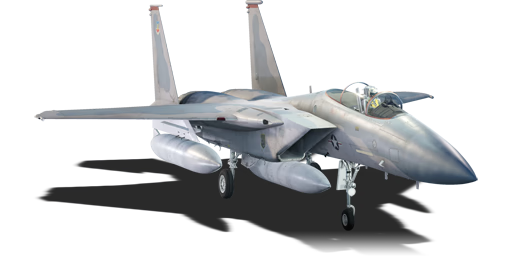



Towards the end of the Vietnam War, the United States saw their major shortcoming in dogfighting performance, as the heavy F-4 Phantom operated by most branches at the time was garnering an unsatisfactory kill-death ratio. Meanwhile, the far more manoeuvrable "gunfighter" F-8 Crusader II was achieving a far better track record. As a result, not long after the end of the conflict, two new development projects were started by the USAF, one of which was the F-X program to develop a "next generation" fighter that favoured manoeuvrability over top speed. However, the F-X program would take a sharp turn not long after, as multiple radar reports from Turkey and Israel observed an unknown Soviet aircraft flying overhead at speeds above Mach 3. Quick investigation through spy satellites and high altitude reconnaissance aircraft brought the discovery of the Soviet's latest MiG-25 aircraft, which at the time was assumed by the West as a high tech, next generation fighter made of the latest composite materials. What scared the United States the most, was that the design of this MiG-25 was dangerously similar to the initial prototypes of the F-X program, which had not even flown yet. Eventually, development of the F-X program was accelerated into its latter phases, resulting in the venerable F-15 Eagle, an absolute best of all worlds, no compromises held, air superiority fighter to combat this new Soviet threat. However, the defection of Viktor Belenko to Japan with his MiG-25 shortly after showed the world that the MiG-25 was overestimated, being in reality constructed out of heavy metals and armed with weaker avionics suited for long range combat, making the MiG-25 merely a heavy interceptor, and not the "next generation super-fighter" that was feared before. The same cannot be said about the indomitable Eagle however, as the F-15 and its later variants would go on to establish the most widely regarded air-to-air combat kill-death ratio of any modern jet fighter: at least 103 aircraft kills without a single confirmed loss.
Introduced in Update "Air Superiority", the F-15A succeeds the equally famous F-4E Phantom II in the tech tree. The F-15A is represented as the 1994 model in service with the US Air National Guard, being outfitted with 240 countermeasures and the upgraded AN/APG-63 PSP radar, but lacking AIM-120A and BOL rails. Even without such upgrades, the Eagle is still a very fearsome monster in top tier jet battles, utilizing its great avionics and incredible missile selection, including the lethal AIM-9M with IRCCM flare-rejection, to prey on enemy aircraft at a safe distance. More importantly, unlike the earlier Phantoms, when push comes to shove, the Eagle can reliably dogfight most enemies it may face thanks to its stable airframe design and absurd engine power giving it incredible acceleration and TWR. One must still be wary however that the Eagle is not completely undefeatable, and proper usage of this aircraft requires training and discipline just like its real life counterpart. Some enemies to be aware of are the Mirage 4000 and early F-16As for their ability to win an extended dogfight over the Eagle, but moreso cautious when engaging players flying the JAS 39, J-11, and Su-27, as these aircraft not only possess an unstable airframe allowing them to perform impressive manoeuvres (and defeat the Eagle) at low speeds, but they also carry lethal close range missiles with IRCCM, which when coupled with their helmet-mounted targeting systems, can prove to be very dangerous for any enemy, Eagle or not, which gets close and slow in a dogfight.
flaps
flaps
flaps
brake
| Belt | Belt filling | Armor penetration (mm) at a distance: | |||||
|---|---|---|---|---|---|---|---|
| 10 m | 100 m | 500 m | 1000 m | 1500 m | 2000 m | ||
| HEF-I/API-T/AP-I/SAPHEI | 40 | 36 | 22 | 12 | 6 | 3 | |
| HEF-I/HEF-I/API-T/HEF-I/HEF-I/AP-I | 40 | 36 | 22 | 12 | 6 | 3 | |
| SAPHEI | 37 | 33 | 20 | 11 | 6 | 4 | |
| HEF-I/AP-I/AP-I/SAPHEI | 40 | 36 | 22 | 12 | 6 | 3 | |
| Name | Weight | Slot | ||||||||||
|---|---|---|---|---|---|---|---|---|---|---|---|---|
| 84.5 kg |  |  |  |  | ||||||||
| 84.5 kg |  |  |  |  | ||||||||
| 240.9 kg |  |  |  | |||||||||
| 254 kg |  |  |  | |||||||||
| 6 × | 1,445.4 kg |  |  |  | ||||||||
| 6 × | 1,524 kg |  |  |  | ||||||||
| 893.6 kg |  |  |  | |||||||||
| 1,027 kg |  |  |  | |||||||||
| 3 × | 1,204.2 kg |  |  |  | ||||||||
| Drop tank (610 gal.) | 145.1 kg |  |  |  | ||||||||
| 231.3 kg |  |  |  |  | ||||||||












Flight performance | |
|---|---|
Survivability |
|---|
Weaponry | ||
|---|---|---|
